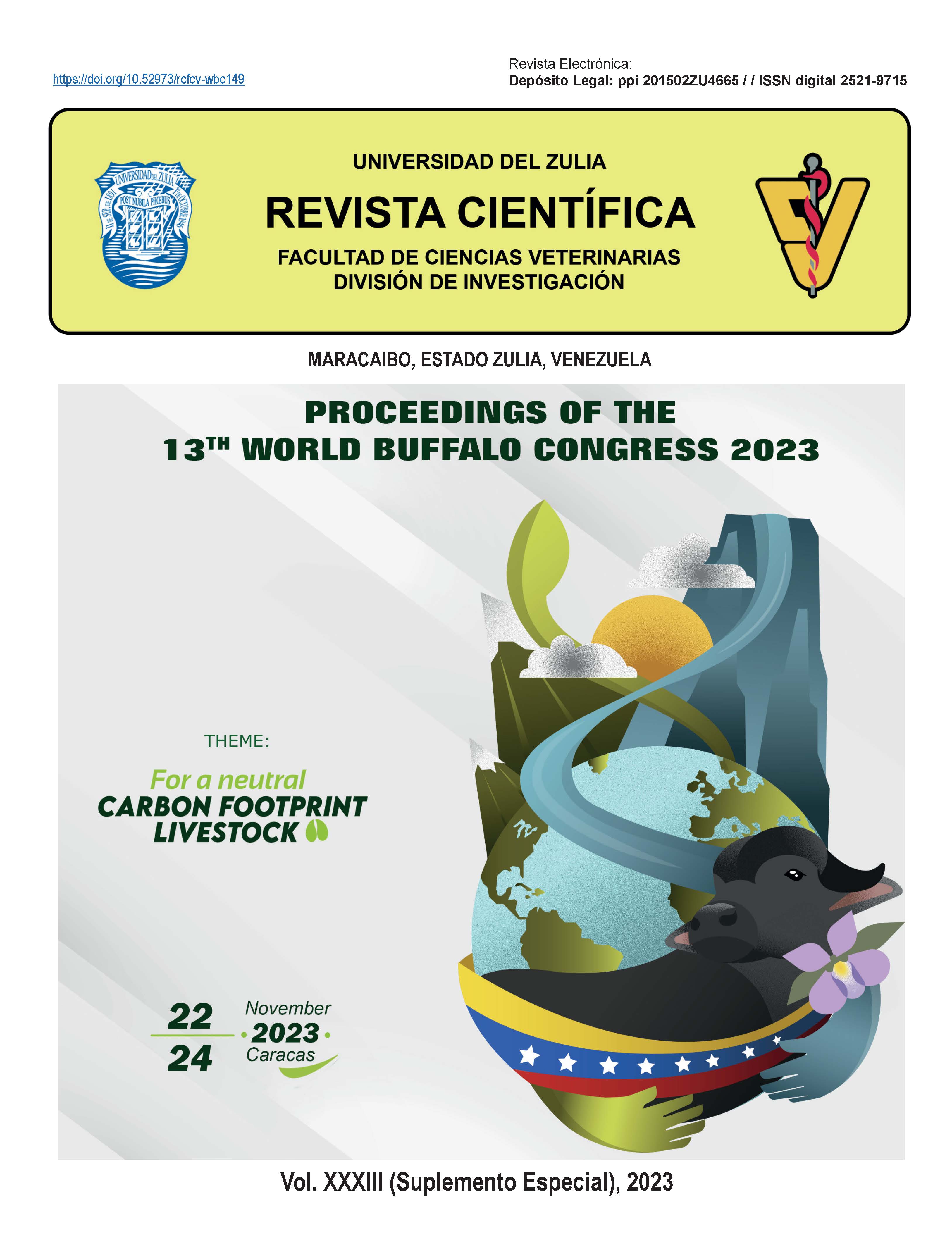Relación entre el momento posparto de la gestación y la productividad en vacas búfala de agua. Resultados preliminares
Resumen
Uno de los hechos más importantes en la industria ganadera es la necesidad de incrementar el rendimiento reproductivo para mejorar la rentabilidad. En el caso de las búfalas de agua, se recomienda un intervalo parto- concepción máximo de 90 días; sin embargo, lograr este objetivo reproductivo podría ser un desafío. Este estudio evaluó, cómo el momento en que las búfalas de agua quedan preñadas (antes o después de los 90 días posparto) afecta la duración de la lactancia, la producción total de leche, el intervalo entre partos, la producción de leche por día del intervalo entre partos y el período seco. En este estudio, se consideró el día 90 como el momento máximo posparto en el que las búfalas deben quedar preñadas para alcanzar un intervalo entre partos cercano a los 400 días, considerado como el máximo intervalo entre partos sin un impacto económico negativo en la rentabilidad de la explotación. Este estudio de cohorte retrospectivo analizó 3060 observaciones de 1459 búfalas de agua de tres fincas en un ambiente agroecológico similar (condados de Catatumbo y Jesús María Semprún, estado Zulia, Venezuela). Se construyó un modelo lineal mixto de la media de paridad, duración de la lactancia, producción total de leche, intervalo entre partos, producción de leche por día de intervalo entre partos, producción de leche por año, período seco e intervalo entre partos con el momento posparto de la preñez (antes o después de 90 días) como efecto fijo. Todos los análisis se realizaron en Stata 15.1 y las comparaciones se ajustaron mediante el método de Sidak. Las búfalas que quedaron preñadas después de 90 días posparto tuvieron una menor paridad (1,85 vs. 2,25, p<0,05), un período de lactancia más prolongado (321,77 días vs. 254,01 días, p<0,05), una producción total de leche de 18,09% mayor ( 1452.91 kg vs. 1230.31 kg, p<0.05) y un intervalo entre partos 149.43 días más largo que las que quedaron preñadas en los primeros 90 días posparto (512.93 vs. 363 días, p<0.05). Tanto la producción de leche por día de intervalo entre partos como la producción de leche por año fue mayor en las búfalas de agua que preñaron durante los primeros 90 días posparto (3.39 kg y 1237.5 kg vs. 2.9 kg y 1072.11 kg, respectivamente, p<0.05) y el período seco fue menor (108,98 vs. 191,16 días, p<0,05). En conclusión, las búfalas que quedaron preñadas en los primeros 90 días posparto tuvieron mayor producción de leche por día de intervalo entre partos, más leche por año y menos días no productivos que las que quedaron preñadas después de los 90 días posparto. Adoptar medidas para incrementar el rendimiento reproductivo de las búfalas de agua y, en consecuencia, maximizar la rentabilidad debe ser una regla y no una excepción.
















